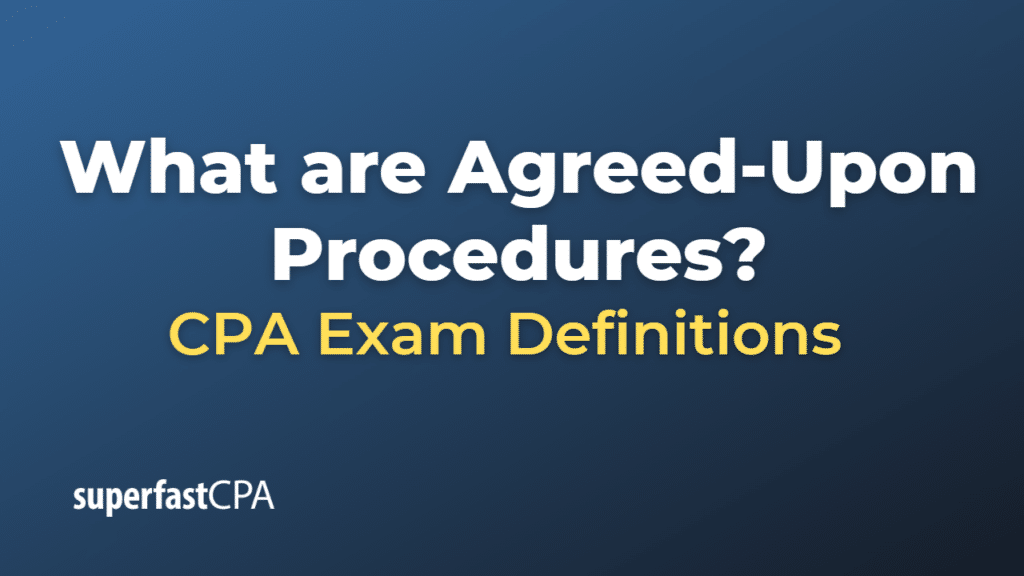Agreed-Upon Procedures
Agreed-Upon Procedures (AUP) is a type of engagement in which an independent auditor or accounting professional performs specific procedures agreed upon by the parties involved (usually the client and a third party). The purpose of an AUP is to provide a report on factual findings resulting from the agreed-upon procedures, rather than expressing an opinion or providing assurance.
AUP engagements are often used when the parties involved want to obtain independent verification or assessment of specific financial information or operational processes. Examples of situations where AUP might be used include:
- Testing specific controls in an organization’s internal control system.
- Verifying the accuracy of specific financial information, such as sales figures, inventory counts, or payroll calculations.
- Assessing compliance with regulatory requirements or contractual agreements.
In an AUP engagement, the auditor’s role is limited to reporting the results of the agreed-upon procedures. They do not provide an opinion on the financial statements, the effectiveness of internal controls, or compliance with laws and regulations. The users of the AUP report must draw their own conclusions based on the findings presented.
Example of Agreed-Upon Procedures
Let’s consider a scenario where a company, ABC Corp, is being acquired by another company, XYZ Inc. As part of the due diligence process, XYZ Inc. wants to verify certain financial information about ABC Corp before finalizing the acquisition deal.
XYZ Inc. and ABC Corp agree to engage an independent accounting firm to perform an Agreed-Upon Procedures (AUP) engagement, focusing on the following specific procedures:
- Verify the accuracy of the accounts receivable (A/R) aging report by selecting a sample of 20 outstanding invoices and confirming their details with customers.
- Verify the existence and valuation of the inventory by observing a physical inventory count and testing a sample of items for correct pricing.
- Review a sample of 10 sales transactions to confirm that they have been recorded in the correct period and are supported by appropriate documentation.
The independent accounting firm performs the agreed-upon procedures and provides a report presenting their factual findings. The report might state, for example:
- For the 20 invoices in the A/R aging report, 18 were confirmed with customers, while two customers disputed the amounts. The differences were reconciled, and adjustments were made accordingly.
- During the inventory count, 95% of the sampled items were physically present and correctly priced, while 5% were found to have discrepancies in pricing.
- All 10 sales transactions were recorded in the correct period and supported by appropriate documentation.
Based on this report, XYZ Inc. and ABC Corp can draw their conclusions and make informed decisions about the acquisition. Note that the accounting firm does not provide an opinion or assurance; they only report their findings based on the agreed-upon procedures.













